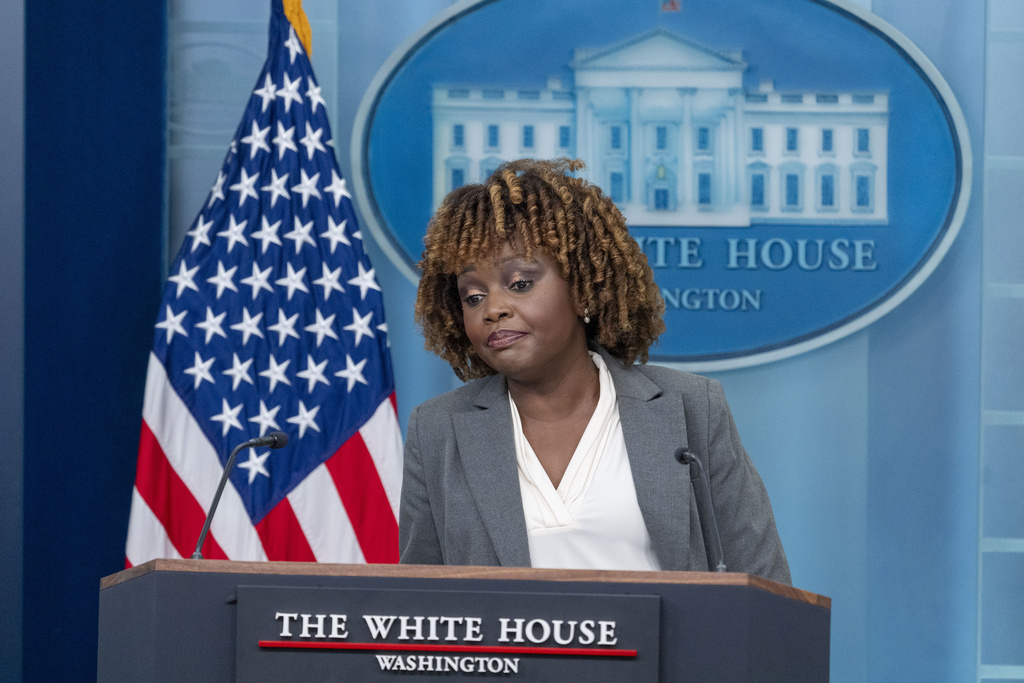USS Ronald Reagan Redeployed Near South Korea
An EA-18G Growler launches from the flight deck of the aircraft carrier USS Ronald Reagan in the Pacific Ocean, Sept. 14, 2022. (Michael Jarmiolowski/U.S. Navy)
CAMP HUMPHREYS, South Korea — The nuclear-powered aircraft carrier USS Ronald Reagan is redeploying to South Korea’s eastern coast less than a week after it concluded trilateral naval drills with South Korean and Japanese warships.
South Korea’s Joint Chiefs of Staff in a press release Wednesday said the Ronald Reagan Carrier Strike Group would be entering international waters in the East Sea, also known as the Sea of Japan, on the same day due to “highly unusual” timing of North Korea’s activities.
On Tuesday, the communist regime fired an intermediate-range ballistic missile that flew over Japan before splashing down in the Pacific Ocean.
The strike group’s redeployment “demonstrates the determined will of the [South Korea]-U.S. alliance and will enhance the readiness posture of the alliance against consecutive North Korean provocations,” the Joint Chief’s statement said.
The strike group made port in and around the coastal city of Busan on Sept. 23, shortly before a four-day drill with South Korean warships to address “North Korean provocations with an aim to improve capabilities” of the U.S. and South Korean navies, according to South Korea’s Ministry of National Defense.
The ships were joined by the Japan Maritime Self-Defense Force for an anti-submarine warfare exercise on Sept. 30, the first such drill in five years.
North Korea has launched several missiles since those drills. It has carried out five rounds of tests in a span of 10 days and 22 tests so far this year, a record.
Tuesday’s IRBM test prompted the Japanese government and U.S. military to issue alerts warning people to seek shelter. The incident marked the first time in five years that North Korea has fired a missile over Japan.
Japanese Chief Cabinet Secretary Hirokazu Matsuno, during a news conference immediately following the launch, described it as an “extremely problematic act.”
South Korean President Yoon Suk Yeol presided over a meeting with the country’s National Security Council and said the “reckless nuclear provocation” would only bolster Seoul’s defense capabilities and its alliance with Washington.
Allies’ response
Hours after the test, four South Korean F-15K Slam Eagles and four U.S. Air Force F-16 Fighting Falcons dropped two Joint Direct Attack Munition, or JDAM, bombs on an island target in the Yellow Sea.
The joint exercise resembled a similar drill by South Korea after the North launched an intercontinental ballistic missile on March 24. Seoul fired several ground-to-sea missiles and dropped two bombs into the East Sea then as a show of force.
A U.S. Indo-Pacific Command news release on Tuesday’s joint exercise referred to North Korea’s latest test and said the JDAMs showcased the “combined deterrent and dynamic strike capabilities” of the U.S. and South Korea.
“The U.S. remains committed to peace and prosperity through the region in order to secure a free and open Indo-Pacific,” the statement said. “Our commitment to the defense of [South Korea] and Japan remains ironclad.”
U.S. and South Korean forces followed that up with another exercise early Wednesday. The two sides launched four Army Tactical Missile System surface-to-surface missiles toward the East Sea to demonstrate their “reaction capability” and “for the purpose of deterring further provocations” from North Korea.
One of its missiles was successfully launched but the other failed, a South Korean military official told Stars and Stripes by phone Wednesday. No casualties were reported, and an investigation is ongoing. South Korean officials customarily speak to the media on condition of anonymity.
“South Korea and the U.S. showed they have the capabilities and posture to incapacitate the origin points of provocations, no matter where North Korea provokes, while always maintaining their surveillance level on North Korea,” a statement from South Korea’s Joint Chiefs of Staff said on Wednesday.
North Korea’s state-run media outlets had not published details of its missile launch as of Wednesday morning. The outlets, such as the Korea Central News Agency, often release unverified specifications of the projectiles following a launch and criticize military exercises between the U.S. and South Korea.
" Conservative News Daily does not always share or support the views and opinions expressed here; they are just those of the writer."





